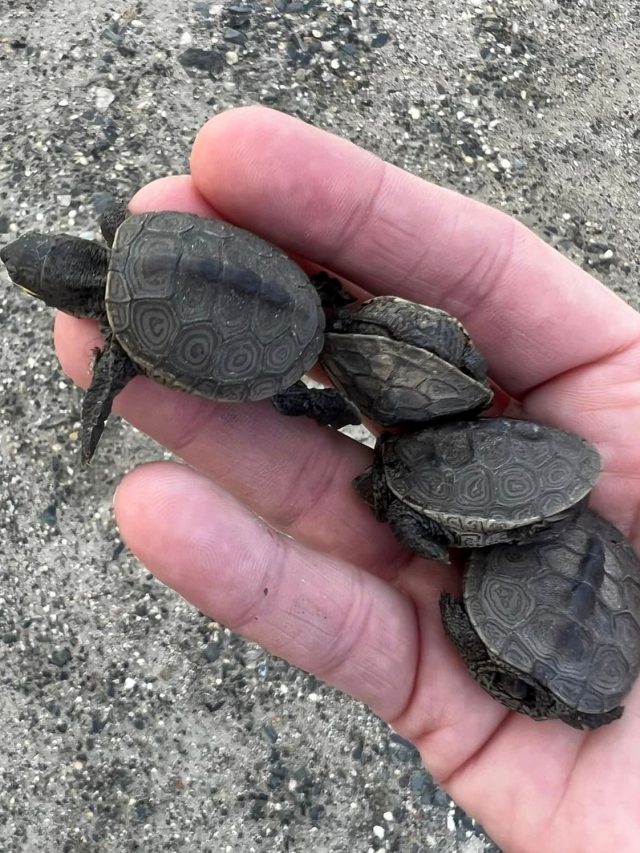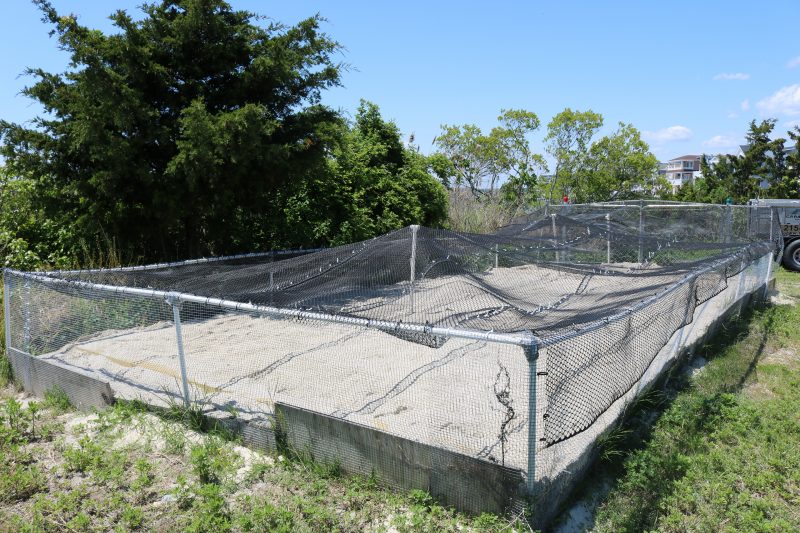
By DONALD WITTKOWSKI
They’re in the streets, they’re on the sidewalks and some are in the storm drains.
Sea Isle City is being invaded by waves of tiny turtle hatchlings that are on the move after emerging from their winter hibernation.
The diamond terrapin babies become active about this time each year, but they are showing up in bigger numbers than usual so far this spring, suggesting that 2023 may be a blockbuster season for turtles.
“They’ve just been everywhere,” said Steve Ahern, co-founder with his wife, Susan, of the Sea Isle Terrapin Rescue organization.
Ahern is hopeful that the mild winter this year allowed a veritable army of baby diamondbacks to survive. When looking at the quarter-sized turtles, it seems remarkable that anything so small and fragile could survive any conditions over the winter.
“Right now, the numbers I’m seeing are record-breaking for this time of year,” Ahern said in an interview Wednesday.
In just two weeks, he has rescued 165 baby turtles, about double the number of hatchlings he found last year.
“I just hope this is a good result from a tremendous nesting season, and so many of them survived,” he said.
“I’m hoping this will be one of the peak years,” he added.
Ahern and his wife have been rescuing terrapins for 13 years. During the best year for the hatchlings, they rescued 450 in 2011 for the entire season. The lowest number was 52 baby turtles in 2018, following a harsh winter.
“We’re on the 2011 pace,” he said of the possible record-breaking results so far this spring.

Ahern noted that the turtles are already being spotted on the streets and sidewalks throughout Sea Isle. He has also been rescuing some that fell into storm drains.
Anyone who finds a hatchling should take it to the marshlands along the back bays and place it in the grass or vegetation near the water, Ahern said. He stressed that the turtles should not be placed in the water at this time because they are so small they would likely be eaten by fish and other predators.
Ahern said good spots for releasing the babies are the marshlands at 81st Street, the marshlands behind the Sea Isle City Library at 48th Street and Central Avenue, and the marshlands behind the Dealy Field athletic and recreation complex near 60th Street.
Other locations that are good for releasing turtles are the marshlands off 36th Street and 37th Street by Cini Avenue and the marshlands at the northern end of Sea Isle, close to Strathmere.
Diamondback terrapins can live for 30 to 40 years, but with roadwork, construction, shore traffic and deaths related to the fishing industry, longevity is always a concern.
Every summer, busy roadways along the shore are littered with the carcasses of diamondback terrapins crushed by traffic. Sea Isle Boulevard, the main entryway into town, includes a wire mesh fence under the guardrails to block the turtles from venturing onto the road and getting hit.
The diamondbacks have not been classified as threatened or endangered in New Jersey, but they are listed as decreasing. Only one egg in a thousand grows up to be an adult turtle, Ahern has explained in previous interviews.
Over the years, Ahern and his wife have worked with officials from Sea Isle, Cape May County and the Wetlands Institute in Stone Harbor to help create safer conditions for the turtles.
Each spring, the Aherns and other volunteers dig up and refurbish two turtle nesting boxes overlooking the marshlands behind the Sea Isle library to get them ready for the diamondback terrapins that lay their eggs in the summer.

Female turtles emerge from their coastal marshlands habitat from May to June in search of a patch of sandy soil to make their nests. Covered by netting, the nesting boxes give the diamondbacks a safe place to lay their eggs, denying predators such as foxes and raccoons an opportunity to raid the clutches.
The smaller of the two nesting boxes behind the library is being enlarged and revamped to provide more protection for the turtle eggs from predators.
Ahern said some type of animal, possibly rats, tunneled underneath the smaller nesting box to get at the eggs. This spring, wire mesh will be placed underneath both nesting boxes to prevent predators from burrowing their way to the eggs.
In addition to the two behind the library, another nesting box is being built in the north end of Sea Isle, close to the border with Strathmere, near the marshlands off Landis Avenue between First and Second streets.
“We’re trying to get something at the northern end of town. We wanted to diversify a little bit because of the turtles we’re seeing in the northern end of town and in Strathmere,” Ahern said.
Nesting boxes give turtles an alternative place to lay their eggs. They are not in harm’s way near roads and there is a gate and netting designed to keep out predators.
Coincidentally, the year-old hatchlings that continue to emerge from their winter hibernation and the adult female turtles that will soon be looking for nesting sites for this year’s crop of eggs may encounter each other.
“You’ll have little turtles passing their mothers,” Ahern said.








